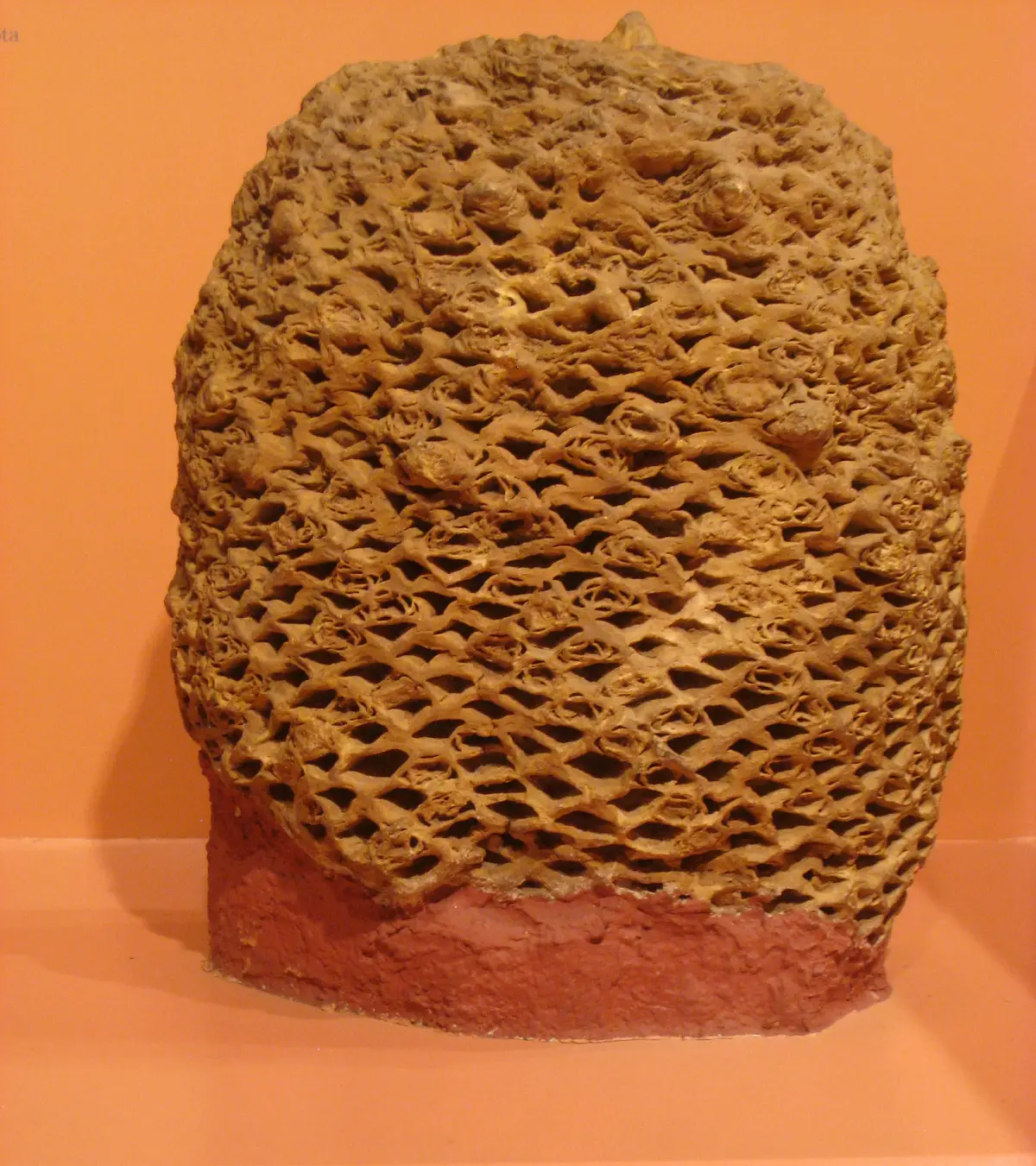Contents
CLASSIFICATION OF CYCADEOIDEA
Kingdom :- Plantae
Division :- Gymnospermae
Class :- Cycadopsida
Order :- Bennettitales
Family :- Cycadeoidaceae
Genus :- Cycadeoidea
STUDY OF EXTERNAL MORPHOLOGY OF THE STEM
- Cycadeiodea ( = Bennettitis) is a fossil that includes many species. Many petrifications have been found of which some are complete plants. This fossil has been found in Jurassic and cretaceous strata of Dakota, America.
- The stems were generally small ( less than three 3. 4. feet in height, sometimes 10 to 12 feet,) and thick ( about 2 feet). It remained covered with persistent leaf bases. A few specimen were branchless ( though in some 3 to 4 small branches arose from in a group from a basal stalk).
- Persistent leaf bases were closely placed and formed a thick mantle. In were present flat scale-like hairs called ramentum.
- Only young leaves have so far been found. These were present close to the apex. Leaves were pinnately compound and the venation was parallel.
- The flowers were borne in the axils of leaves and completely embedded III the armour of persistent leaf bases.
STUDY OF ANATOMY OF TRANSVERSE SECTION OF STEM
- The section is differentiated into three regions central pith, middle region consisting of wood and outer cortex.
- Centrally located pith is smaller in diameter. It was surrounded by wood from all the sides.
- Wood formed a small region that surrounded central pith. The region appeared broken by raylike extensions projecting from central pith.
- Endarch protoxylem was situated on the inner side of the wood , close to the pith. Vascular bundles were arranged in a ring and the xylem was arranged centrifugally.
- Secondary xylem was made of scalariform tracheids and small rays. Rays were uniseriate or biseriate.
- Medullary rays extended beyond cambium up to phloem. These alternate with parenchyma and vertical vascular tissues.
- Cortex was made of parenchyma where gum canals and leaf traces were abundant.
- Leaf trace occurred singly at the place of their origin but broke into many mesarch strands to arrange itself into horse-shoe shaped structure. The mouth of hose-shoe was directed outwards.
TO STUDY THE REPRODUCTIVE PARTS
- Fruiting bodies were produced on the axillary shoots (In some species more than 100 fruiting bodies).
- These appeared in a group between leaf bases. Fructifications were bisexual.
- Many spirally arranged bracts were present on fertile shoots. These kept fructifications covered till they matured. On maturity the bracts of the flower opened and formed saucer-shaped perianth. The structures were modified androecium and gynoecium.
- The pollen bearing structures bore a whorl of about 20 microsporophylls.. These were almost fused at the base. Each microsporophyll consisted of main rachis which bore two rows of trabeculae which in turn held two lateral rows of multicellular synangia.
- Each synangia was pear-shaped bearing 20 to 30 longitudinal pollen sacs.
- The ovule bearing structure was made of conical or spherical receptacle with many stalked ovules and interseminal scales .
- The ovule was orthotropous with a long micropylar beak. The integument of the ovule was fused with the nucellus except at the apex where it formed micropyle.
- The seeds were small and invested with a basal cupule.lt was somewahat elongated or oval in shape and possessed two cotyledons
IDENTIFICATION OF CYCADEOIDEA
- DIVISION – Gymnospermae
- Ovules naked
- Seeds attached to scales
- Scales forming a strobilus
- Class:- Cycadopsida
- Wood manoxylic
- Large frond-like leaves
- Seeds with radial symmetry
- Order– Bennettitales
- Tree trunk covered with mantle of persistent leaf bases.
- Microsporophylls in groups, at the tip, leaves frond-like.
- Megasporophylls in cone like organization.
- Family – Cycadeiodaceae
- Trunk columnar.
- Trunk covered with mantle of leaf bases.
- Flowers sunk in the distal part of the trunk.
- Genus – Cycadeoidea
- Small, globular trunk.
- Bisexual strobilus.
- Orthotropous ovules.


Leave a Reply